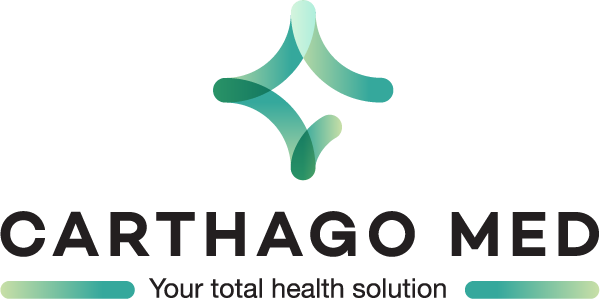
Everything you need to know about the mini-lift
A mini facelift or a mini-lift is a modified version of the traditional facelift. In the “mini” version, a plastic surgeon uses small incisions around your hairline to help lift the lower half of your face and neck, and correct sagging skin. There are countless factors that lead to early skin aging; such as diseases, stress, smoking, hormonal change, yo-yo effect and genetics. The mini-lift is at times suggested to young patients who wish to prevent signs of aging or have important skin slackening and wish to get more natural results than those of a total and invasive face-lift. The mini-lift is similar to that of a traditional facelift in terms of principle; however, the surgical act and operative effects are more moderate and less invasive.
What is the procedure for a mini-lift?
A mini facelift, a transformative cosmetic procedure offered at the renowned Facial Plastic Surgery center in Newport Beach by the esteemed board-certified surgeon Dr. Alexis Furze, is meticulously designed to enhance facial contours with a focus on the neck, face, and jowls. This procedure is conducted under local anesthesia, ensuring a personalized and comfortable experience for patients from the United Kingdom to Canada. The technique involves strategic incision placement, a critical aspect influenced by factors such as the region of correction, age, gender, and the surgeon's preferences. Notably, these incisions, significantly smaller than those in a classic facelift, expedite the healing process of post-surgical scarring. Positioned discreetly in the auricular pinna, these incisions result in virtually invisible scarring around the hairline within 3 to 6 months post-intervention.
Post-incision, the skin is delicately detached, and sagging subcutaneous tissues are skillfully tightened using an internal thread. Subsequently, any excess skin is meticulously removed, and the incisions are precisely sutured to achieve minimal scarring. Noteworthy is the integral role of muscle tightening in repositioning both the skin and fatty tissues, contributing to the natural and enduring results for which Dr. Furze is acclaimed. To further mitigate post-surgical effects, a bandage is thoughtfully placed around the head by the surgeon, aimed at limiting swelling and bruising. Alternatively, a patch may be used for incision care. The efficiency of the procedure extends to the resumption of daily activities, typically achievable within 7 to 10 days post-surgery, attesting to the faster recovery associated with this cosmetic intervention. For those considering this procedure, it's essential to understand that a mini facelift is not a one-size-fits-all solution. Dr. Furze employs a personalized and conservative approach, addressing specific concerns related to sagging skin, jawline definition, and wrinkle reduction. The surgeon's commitment to an anatomical outline during incision placement underscores the dedication to a more natural outcome, as reflected in the remarkable transformations showcased in before-and-after images of previous patients.
Beyond the surgical excellence, Dr. Furze's commitment to a comprehensive perioperative experience distinguishes his practice. Patients from the UK and Canada, seeking aesthetic enhancement, are not only provided with top-tier medical expertise but are also guided through a seamless process, from their initial visit to the last follow-up appointment. This commitment to customer service sets Dr. Furze's team apart, ensuring each patient feels supported and informed throughout their transformative journey.
What are the limitations of the mini-lift?
Crow’s feet wrinkles, bitterness, and nasolabial folds, as well as under-eye wrinkles or a double chin, represent persistent challenges that cannot be fully addressed through a standalone mini facelift procedure. Despite its remarkable effectiveness in tackling specific facial aging concerns, the mini-lift has its limitations. Recognizing the need for comprehensive facial rejuvenation, individuals often explore combining the mini-lift with various other procedures within the realm of cosmetic medicine or surgery to achieve a more holistic transformation and optimize results. Board-certified surgeons, especially experts like Dr. Alexis Furze, emphasize the importance of tailoring the treatment plan to the unique needs and goals of each patient.
One popular complementary surgery to the mini-lift is blepharoplasty, targeting the eyelids to address issues like crow’s feet and under-eye wrinkles. Additionally, individuals may opt for neck or jowls’ liposuction to enhance the contour of the lower face. In cases where a double chin or saggy cheeks are prominent, a lipostructure procedure might be recommended. To further refine the outcomes, patients have the option to undergo non-surgical enhancements such as hyaluronic acid injections in nasolabial folds or the use of botulinum toxin to minimize wrinkles. These supplementary procedures, when strategically combined, contribute to achieving a more harmonious and youthful appearance.
Understanding that patients from diverse backgrounds seek such interventions, Dr. Furze's practice, Facial Plastic Surgery in Newport Beach, prioritizes a comprehensive and customer-centric approach. Their commitment extends from providing a thorough pre-operative consultation, where the surgical plan is carefully outlined based on the patient's anatomical features, to ensuring a minimal scarring and faster recovery postoperatively. In Orange County and Canada, where the demand for cosmetic procedures is high, patients benefit not only from Dr. Furze's renowned expertise but also from the commitment to a conservative approach that respects the individuality of each face. The perioperative experience at Facial Plastic Surgery OC is designed to provide support and guidance from the initial clinic visit to the final follow-up appointment, setting them apart in terms of customer service.

What precautions should be considered after the mini-lift?
Following your mini facelift procedure, it is imperative to take certain precautions to ensure a smooth and effective recovery process. Avoid engaging in strenuous activities, such as heavy cleaning, bending, or lifting heavy objects, immediately after the intervention. These activities can impede the healing process and may lead to undesirable outcomes. For optimal results, it is strongly recommended to adopt a sleeping position on your back. This position helps to keep the head in place, minimizing the risk of swelling and bruising on specific areas of the face.
After the second day post-intervention, you can safely wash your hair. Daily hair washing is advised to prevent the formation of blood crusts behind the ears, promoting overall cleanliness and hygiene during the recovery period. To address swelling around the neck and face area, consider applying cold compression garments. This practice can significantly contribute to reducing postoperative swelling, enhancing your comfort and expediting the healing process. Understanding the timeline for resuming certain beauty routines is crucial. You can begin applying makeup on your face two weeks after the surgery. For hair-related procedures, consider dyeing your hair 5 to 6 weeks post-surgery and straightening it 3 to 6 months after the mini facelift. These timelines ensure that you reintroduce these activities gradually, allowing your body ample time to heal.
It is essential to follow these post-operative care guidelines diligently to achieve the best possible results from your mini facelift. For personalized advice and support, consult with a qualified professional such as Dr. Alexis Furze, a renowned board-certified surgeon specializing in facial plastic surgery in Newport Beach, Orange County. His commitment to delivering natural results with a conservative approach ensures a positive and satisfying experience for his clients throughout their perioperative journey. At Facial Plastic Surgery, our dedication to exceptional customer service sets us apart, offering a complete range of cosmetic procedures to enhance your appearance safely and effectively.
What are the results of the mini-lift?
Witnessing the transformative effects of a mini facelift is a journey that unfolds over 2 to 3 months post-surgery. This minimally invasive yet highly effective intervention, performed by esteemed board-certified surgeon Dr. Alexis Furze at Facial Plastic Surgery in breathtaking Newport Beach, delivers not only natural but also enduring results. The term "mini facelift" encompasses various nuances, including lower face lift and micro face lift, making it imperative for individuals to comprehend the subtleties and potential outcomes. Beyond the captivating before and after mini facelift images, it is crucial to acknowledge that the aging process persists, albeit at a decelerated pace. The brilliance of a mini facelift lies in its ability to defy the hands of time; a decade later, you will appear as if untouched by its passage. This exceptional longevity stems from the expertise of a board-certified surgeon like Dr. Furze, whose mastery extends to meticulous details such as precise incision placement along the anatomical outline.
In the realm of cosmetic procedures, the jawline definition achieved through a mini facelift stands as a testament to the artistry and skill involved. The intervention not only addresses concerns of sagging skin and wrinkle reduction but also fosters an environment for a faster and smoother recovery, minimizing downtime for patients. The emphasis on a conservative approach ensures that the results are not only striking but also natural, avoiding the pitfalls of a "botched mini face lift." As individuals contemplate the prospect of a mini facelift, questions such as "What is a mini facelift?" and "What is a mini facelift procedure?" may arise. Dr. Furze, with his extensive experience in plastic surgery and commitment to excellence at every step, is well-equipped to answer these queries, providing clarity on the nuances of the intervention and its potential impact on skin texture improvement and minimal scarring. A mini facelift at Facial Plastic Surgery OC is not just a cosmetic enhancement; it is a harmonious blend of science and artistry. Dr. Furze and his team are dedicated to ensuring that each client emerges from the experience not only looking rejuvenated but also feeling confident in the timeless beauty they have attained.









